The Summer Quarter of June, July, August
In June, we enjoy the longest days of the year just before the summer solstice. Even though the sun begins its journey south, the shortening length of daylight is imperceptible. While the world is lush and green, tune in to the rhythms of the natural world and become aware of the energy that surrounds you. Before the heat of high summer arrives, there is a brief period in which to enjoy the softness of this season and the magic of gentle starlight on warm summer nights.
Summer marks the time when the Great Goddess is in her full mother aspect as the fields and orchards ripen in July. Shimmering waves of heat rise skyward as we bask in the warmth of this season. This is the time to enjoy the freedom of lightweight clothing and the night chorus of crickets as you gaze skyward to work with the magic of the stars.
During August, humid weather blankets the land and imposes a slower pace to complete the annual cycle of growth. Roses may be fading, but lavender and chamomile are in their glory. Lazy days are offset by dazzling thunderstorms that tear the night sky asunder. Even as summer winds down, autumn is a distant horizon.
This time of year the night sky is called the Vega Quadrant because the star Vega in the constellation of Lyra is the brightest in the sky. An eagle, swan, scorpion, centaur, a mythical hero, a dragon, a musical instrument, a man with a snake, a sea-goat, an altar, and a wolf populate the summer canopy of constellations. Let’s see what energy we can draw and what magic we can work with these constellations.
Some of the bordering constellations noted throughout this chapter may fall within other seasons. The directions given to locate constellations and stars assumes that the reader is facing south. Also, have a look at chapter 8 as some of the southern constellations listed only in that chapter may be visible to you.

Figure 5.1. The summer sky. The dotted shape is the Summer Triangle asterism. The five brightest stars are also noted.
The Summer Constellations
Aquila: The Eagle/Power of the Sun
Pronunciations: Aquila (ACK-ill-uh); Aquilae (ACK-ill-eye)
Visible Latitudes: 90° North to 75° South
Constellation Abbreviation: Aql
Bordering Constellations: Aquarius, Capricornus, Delphinus, Hercules, Ophiuchus, Sagittarius, Serpens
Description: A prominent line of three stars marks the upper part of the eagle’s back. Extending to the southeast and northwest, other stars mark the tips of the wings. Stars for the tail extend toward the southwest.
To Find: Locate Vega, the brightest star in the summer sky. Draw an imaginary line to the southeast to the next bright star. This is Altair in Aquila.
Latin for “eagle,” Aquila represents this majestic bird, and it has been recognized as such for over 4,000 years. Aquila is most often associated with the eagle companion and servant of Zeus who carried the god’s thunderbolts. In one myth, Aquila lifted the young Ganymede to Olympus to be the cupbearer of the gods. In another legend, this constellation represented Aphrodite disguised as an eagle, which was part of a ruse. As an eagle, she chased Zeus, who was in the form of a swan, into the protective arms of Leda. Zeus later placed the image of an eagle and a swan among the stars to commemorate the event of his sexual conquest of Leda.
In quite a different story, Zeus sent an eagle to rescue the lyre of Orpheus after it was thrown into a river when the musician was murdered. He honored both bird and instrument by placing them in the sky. The lyre is represented by the Lyra constellation.
The alpha, beta, and gamma stars of this constellation have been called the Family of Aquila. The Persians called them the Striking Falcon, and in India this line of stars represented the footprints of the god Vishnu. Also, in an earlier Vedic myth of India an eagle messenger from the god Indra brought soma, a ritual drink of deities, to earth for humans. The Turks called the whole constellation the Hunting Eagle, and the Arabs called it the Flying Eagle.
Ptolemy equated the energy of Aquila with Mars and Jupiter, and noted that the constellation bestows clairvoyant abilities. Later astrologers equated Aquila with Saturn and Mercury as well as Uranus and Mercury. In medieval medicine, Aquila was credited with conferring honors and preserving traditions.
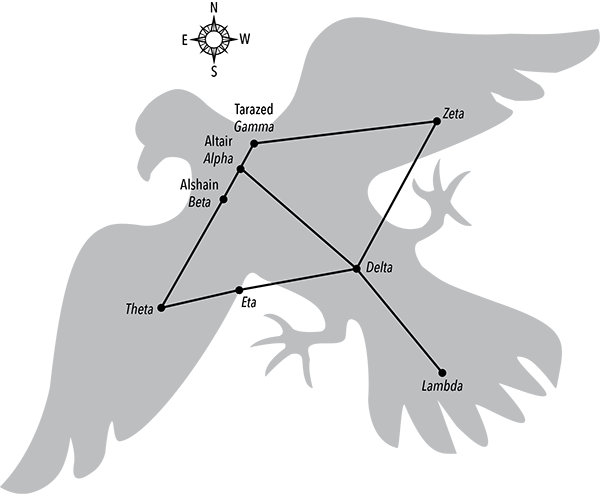
Figure 5.2. Aquila represents the power of the eagle and is a symbol of the sun.
Notable Stars in Aquila
Official Designation: Alpha Aquilae
Traditional Name: Altair
Pronunciation: AL-tair
Altair is the middle of three stars across the eagle’s upper back. Its name is derived from the Arabic name of the constellation, the Flying Eagle. The Babylonians and Sumerians called Altair the Eagle Star, and Ptolemy’s name for it was Aetus, “eagle.” 19 In India, it is associated with the Hindu god Vishnu and Garuda, the eaglelike bird that he rides. Altair has also been called Vishnu’s Star. This yellow star is the southern anchor point for the Summer Triangle asterism.
Official Designation: Beta Aquilae
Traditional Name: Alshain
Pronunciation: al-SHANE
Alshain is a double star composed of a yellow primary component with a red companion. Its position as one of the three distinctive stars across the eagle’s upper back gives Alshain prominence. However, astronomers are baffled as to why it was given the beta designation because Tarazed, another of the three stars, is actually the second-brightest star in the constellation.
Official Designation: Gamma Aquilae
Traditional Name: Tarazed
Pronunciation: TAHR-ah-zed
As already mentioned, this orange star is the second brightest in Aquila and one of the three prominent stars. The names of Alshain and Tarazed come from a Persian phrase that was derived from Arabic and means “the balance.” Tarazed and Alshain are on either side of Altair.
Magical Interpretations and Uses for Aquila
As a symbol of the sun, the eagle embodies the spirit of summer. It is one of the most sacred of animals to Native Americans. In Celtic lore, the eagle is one of the oldest and wisest creatures, and it is associated with prophecy and power. Celtic names for the eagle included Suil-na Graine, “eye of the sun,” and Lolair, “guide to the air.” 20
As it is a bird of the sun, fire, and air, call on this celestial eagle to be a special presence at your Litha ritual. Lay out the pattern of Aquila’s stars with glitter/confetti on your altar. Or, simply place three tea light candles in a row to represent the stars Altair, Alshain, and Tarazed. To call the eagle’s energy say: “Aquila, Aquila, Eye of the Sun; Today begins summer, your time has come. Bright as our day star, when you take flight; We ask for your presence, please join us this night.”
This invocation can be used when honoring Zeus, Jupiter, Mithras, Vishnu, Indra, Odin, or other powerful gods associated with the eagle. It is also an aid for getting in touch with the power of the terrestrial bird. Aquila’s energy can be called upon for spells of success or whenever you need support in reaching new heights in your life.
As an eagle, Aquila is an aid for divination or any psychic work through which you seek wisdom. He is also a bridge to other realms and can act as a guide and a helper for astral travel. You can soar with a celestial eagle on the astral plane. In preparation the night before, draw the configuration of Aquila’s stars on a piece of paper and then wrap the paper around or place it on top of your divination tools. Position them on your altar and say: “Celestial eagle soaring high, through the dark of summer sky. These things upon my altar I place, for your power and wisdom to grace.” On the following night, create a protective circle. Burn frankincense, lavender, or sandalwood incense or light a black or indigo candle. Lay out the configuration of Aquila’s stars on your altar with gemstones such as moonstone, obsidian, or clear quartz. As you unwrap your divination tools say: “Eye of the sun, I bid you to come. With your guidance, this work will be done.”
★ ★ ★
Ara: The Altar/Heavenly Sacred Space
Pronunciations: Ara (AIR-uh); Arae (AIR-eye)
Visible Latitudes: 25° North to 90° South
Constellation Abbreviation: Ara
Bordering Constellations: Corona Australis, Lupus, Sagittarius, Scorpius
Description: Two adjoining and uneven rectangles represent the base of the altar and smoke rising from its top.
To Find: Locate the Summer Triangle and the star Altair at its southern anchor point. Draw an imaginary line toward the southwest through the Sagittarius constellation to Ara, which is located below the scorpion’s tail.
This constellation’s name is derived from Latin and means “altar”; however, in earlier days the word “ara” had two meanings. It could be an altar for hearth and home or a refuge for protection.21 Originating with the Babylonians or possibly the Sumerians, this constellation was referred to in classic literature both as an altar and as a type of censer or incense altar that was common in the Middle East. Because the Romans considered Ara the altar on which Chiron the centaur made sacrifice, they called these stars Ara Centauri.
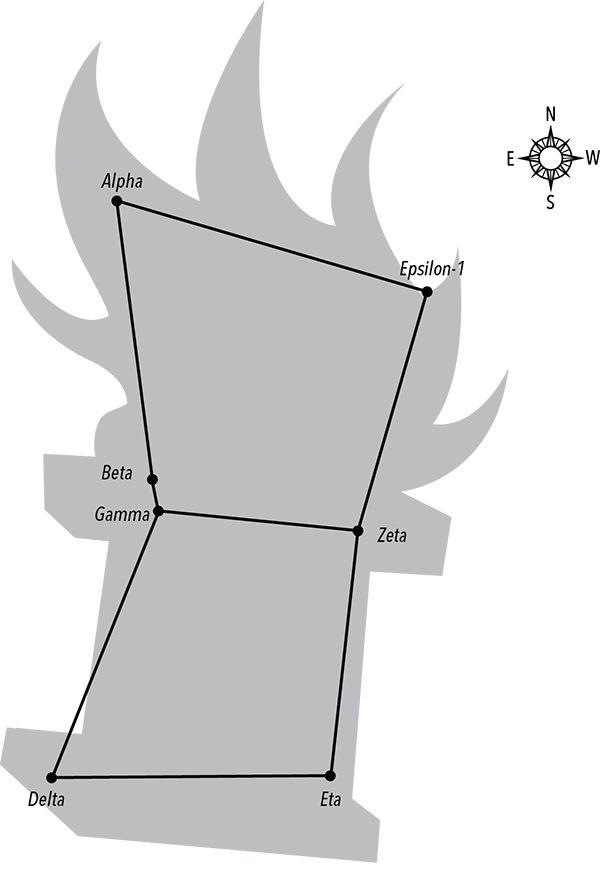
Figure 5.3. Ara provides heavenly sacred space and celestial protection.
The Greeks considered Ara to be the altar upon which the Olympian gods made a vow of allegiance before their battle with the Titans. Vows performed at an altar were understood to be particularly binding, hence the custom today of taking marriage vows in front of an altar. Zeus placed the altar of the gods among the stars to commemorate their victory.
According to another Greek legend, Ara represented the altar that King Lycaon of Arcadia had dedicated to Zeus. Lycaon was known for his cruelties, and after he sacrificed a child on this altar Zeus turned him into a wolf. Another legend said that whenever a human sacrifice was made on Lycaon’s altar a man was turned into a wolf or werewolf. On a lighter note, Ara was also regarded as the altar of Dionysus.
The Greeks imagined the ribbon of the Milky Way above Ara as smoke from the burnt offerings on the celestial altar. Astronomer Johann Bayer depicted an inverted version of Ara in his 1603 atlas, and for a time many star maps followed his lead.
Ptolemy equated this constellation with Venus and Mercury, and noted that it was associated with devotion. In medieval medicine it was regarded as an aid for maintaining chastity. In addition, the Greeks associated Ara with weather prediction, most likely because it became visible each year before the stormy season.
Notable Stars in Ara
Official Designation: Alpha Arae
Official Designation: Beta Arae
Although some of the stars were given names in other cultures, they did not carry over to the West. The blue alpha star is actually the second brightest in Ara; the orange beta is the brightest. The Chinese regarded these two stars as an asterism that they called Chu, which means “pestle.”
Magical Interpretations and Uses for Ara
Although Ara is not visible to many of us in the Northern Hemisphere, it serves as a reminder of the importance of our altars. The concept of an altar dates to a time in prehistory when people began making offerings to their deities and needed a special place in which to do it. Altars have served as places where offerings and sacrifices are made—physically and symbolically. However, an altar is not just a thing that holds a collection of objects. Intention and energy transforms an altar into a space that transcends the mundane world. When we use an altar, we step outside the boundaries of our everyday lives. When we sit in front of an altar, we place ourselves in the presence of spirits, ancestors, and the Divine. We open ourselves to seek and search for answers to questions that guide our souls.
Summer is a good time to give thanks for warm weather and the growing season. A flat rock can serve as a simple outdoor altar. Draw Ara’s star pattern on it and consecrate it as a sacred area of your garden by saying: “Ara, shine your light on this space; Illuminate my sacred place.”
Because the meaning of the word ara could designate an altar for hearth and home, use your outdoor Ara altar to honor Vesta, Hestia, and Brigid, goddesses of the hearth who are also keepers of sacred flames. Place sprigs of lavender, blackberries, or dandelion flowers on it. The gemstones azurite, chrysoprase, or peridot are also appropriate tokens.
With the other Latin meaning of ara being a place of refuge and protection, Ara’s energy can be used as a protective talisman. Draw the star pattern on ordinary stones or flowerpots that can be placed around your property or in any area where you feel protection is needed. If discretion is important, the star pattern can be drawn on the interior of a flowerpot before filling it with soil and plants.
★ ★ ★
Capricornus: The Sea Goat/Horned One of Abundance
Pronunciations: Capricornus (kap-rih-KORN-us); Capricorni (kap-rih-KORN-ee)
Visible Latitudes: 60° North to 90° South
Constellation Abbreviation: Cap
Bordering Constellations: Aquarius, Aquila, Piscis Austrinus, Sagittarius
Description: The star pattern of Capricornus looks like a fat letter V.
To Find: Start at Vega, the brightest star in the summer sky, and draw an imaginary line southeast to the next bright star, which is Altair in Aquila. Continue that line to the southeast and the next constellation is Capricornus.
Capricornus is located in a region of the sky that the ancients called the Sea. The constellation’s name comes from the Greek caper, “goat,” and cornu, “horn.” Even though Capricornus is a rather faint constellation, its observation dates to the Babylonians, who referred to it as a goatfish. The Arabs and Persians regarded the constellation simply as a goat. The Romans associated it with the goddesses Venus and Vesta. They depicted Venus riding a sea-goat, and considered Capricornus to be under the protection of Vesta. In addition, images of sea-goats were incorporated into frescoes in the Roman catacombs.
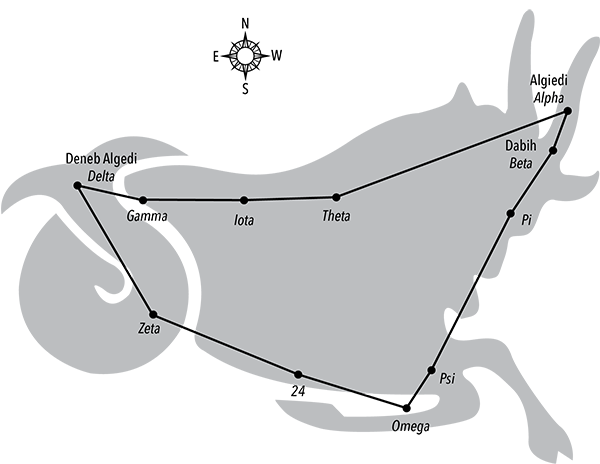
Figure 5.4. Capricornus bridges the powers of land and sea.
The Greeks associated the constellation with the forest deity Pan, who had the legs and horns of a goat. According to legend, Pan was honored with a place in the sky for helping to rescue the Olympian gods during their war with the Titans. During the battle against Typhon, Pan eluded the monster by jumping into a river and turning the lower part of his body into that of a fish so he could swim faster.
Another myth concerns the origin of the cornucopia or horn of plenty. This story tells how a goat, owned by the nymph Amalthea, suckled the infant Zeus. In gratitude, Zeus removed a horn from the goat and told Amalthea that it would provide her with anything she desired. Eventually, the horn was passed along to the river god Achelous, who used it to replace one of his own that had broken. Achelous was usually described as a mixture of land and marine animal.
The Tropic of Capricorn is an imaginary line south of the equator that marks the southernmost point at which the sun appears overhead at noon on the winter solstice. When this was noted two thousand years ago, Capricorn was in position as a backdrop to the sun and the line was named for this constellation. Because modern astrology uses the traditional dates for the zodiac, Capricorn is still the sign that begins winter. However, Sagittarius is the actual constellation in position on the other side of the sun on the solstice.
Ptolemy equated the stars of Capricornus with Mars and Venus, Mars and Mercury, or Saturn and Jupiter, depending on which part of the goatfish they depicted. In modern astrology, this constellation is equated only with Saturn. According to Nicholas Culpeper, Capricornus influences the bones, teeth, skin, and the right side of the body.
Notable Stars in Capricornus
Official Designation: Alpha Capricorni
Traditional Name: Algiedi
Pronunciation: al-JED-ee
Although Algiedi is the third brightest star in the constellation, its alpha designation is believed to come from its position as the westernmost star in Capricornus. In depictions, Algiedi is on the sea-goat’s right horn. Also spelled Algedi, this star’s traditional name, which is sometimes shortened to Giedi, comes from the Arabic word for “goat” or “kid.” Algiedi is composed of two yellow stars known as Prima Giedi (Alpha-1) and Secunda Giedi (Alpha-2). These names mean “first and second Giedi.”
Official Designation: Beta Capricorni
Traditional Name: Dabih
Pronunciation: DAH-bee
Located below Algiedi at the base of the goat’s right horn, Dabih is actually two double stars. The first set of stars is called Dabih Major (Beta-1) and the second set is Dabih Minor (Beta-2). Beta-1a is orange and Beta-1b is blue-white. Dabih Minor is blue-white (Beta-2a) and white (Beta-2b). Beta Capricorni’s traditional name, Dabih, comes from Arabic and means “the butcher.” The reason for this is unknown.
Official Designation: Delta Capricorni
Traditional Name: Deneb Algedi
Pronunciation: DEN-ebb al-JEE-dee
Deneb Algedi is actually the brightest star in the constellation. Its traditional name comes from Arabic and means “the tail of the goat,” which describes its location. It is frequently written with the alternate spelling of Algiedi. Deneb Algedi is a four-star system composed of two sets of white (Delta-1) and yellow-white (Delta-2) stars. Ptolemy equated Deneb Algedi with Jupiter and Saturn. Deneb Algedi is associated with wisdom. It was one of Agrippa’s fifteen important fixed stars.
Magical Interpretations and Uses for Capricornus
This constellation has been linked with Pan and, quite naturally, the Horned God. As the Wheel of the Year turns, summer brings him into his prime, making this an excellent time to honor him as well as all men who follow a Pagan or Wiccan path. Whenever Capricornus is in the sky, it is a good time to hold a drumming circle to honor Pan, male fertility, and the wildness of nature. If possible, hold the circle at the beach to emphasize the sea-goat nature of Capricornus. Drumming and dancing is a great way to raise energy and get in touch with the wildness within our spirits. Chant the following as you drum or dance: “Capricorn, hoof and horn; Wild spirit rise in me. Like a flame, be untamed; Capricornus, goat of the sea.”
In addition to marking the first harvest, Lughnasadh is a time to celebrate summer’s abundance. This constellation’s association with the horn of plenty makes the energy of Capricornus ideal to incorporate into this sabbat ritual. Since many of us decorate our altars or the area around them with fruits and vegetables, lay them out in the Capricornus star pattern. However, if space is limited you may want to opt for an image of the sea-goat on which you mark the star pattern. In addition, it’s fairly easy to find a pendant with an image of Capricorn, which can be placed on your altar to help draw the energy of this constellation into your ritual.
Uniting the power of the sea and land, the sea-goat personifies the spirit of summer. Goats are playful and it is easy to imagine an animal with the combination of a goat and sea creature enjoying summer in the ocean waves. If you go to the beach, draw the constellation in the sand or lay out seashells in the star pattern of Capricornus. Connect with the playful energy of the sea-goat by chanting: “Capricornus, goat of the sea; Bring delights of summer to me. With horns of abundance and tail of a fish; Bring pleasure and plenty, this is my wish.”
★ ★ ★
Cygnus: The Swan/Enchanted Shape-Shifter
Pronunciations: Cygnus (SIG-nus); Cygni (SIG-nee)
Visible Latitudes: 90° North to 40° South
Constellation Abbreviation: Cyg
Bordering Constellations: Aquila, Cepheus, Draco, Lyra, Pegasus
Description: The brightest stars in this constellation form an airplanelike shape as well as a cross. What we may consider as the tail of the airplane is the long neck and head of the swan pointing in a southwestern direction.
To Find: Locate the Summer Triangle. The star at the eastern anchor point is Deneb, which marks the tail of the swan. At the center of the triangle is the star Albireo, which marks the head of the swan.
This constellation is most frequently associated with the Greek myth of Zeus and Leda, the Queen of Sparta, whom he seduced. Some versions of the story include Aphrodite disguised as an eagle chasing Zeus, in the form of a swan, into the protective arms of Leda. To commemorate his triumph in seducing the queen, Zeus placed an eagle and swan in the heavens. Cygnus has also been regarded as Orpheus, the Greek hero and musician who was transformed into a swan after his death. Representing his lyre or harp, the constellation Lyra is to the west of Cygnus. In some accounts, Zeus placed the lyre and the eagle that rescued it among the stars.
A completely different myth concerns Phaeton, the mortal son of the sun god Helios, and his friend Cycnus. Phaeton wrangled his father into allowing him to drive the chariot of the sun. Helios warned him to stay on the circle of the zodiac, and although Phaeton tried, he lost control of the chariot. The boys were thrown from the vehicle and fell to earth. Cycnus survived but Phaeton fell into the River Eridanus. Cycnus called on Zeus to turn him into a swan so he could dive into the water and recover his friend’s body. Moved by the boy’s personal sacrifice to live the rest of his life as a swan, Zeus placed him in the heavens where he could race among the stars forever.
The Arabs and Egyptians also regarded this constellation as a bird, but considered it a hen. The Chinese associated it with a myth about a magpie bridge. In the story, the Goddess of Heaven forbade a fairy woman to marry a mortal man and created a river to keep them apart. The bright ribbon of the Milky Way represented the river. According to the legend, once a year all the magpies would come together to form a bridge (represented by Cygnus) over the river, allowing the lovers to be together.
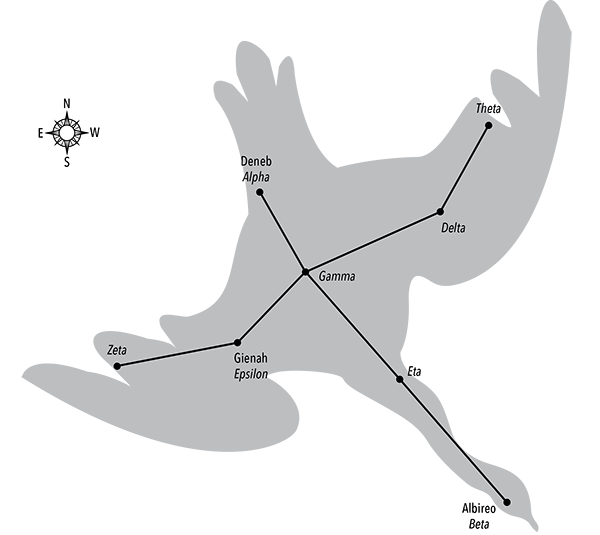
Figure 5.5. Cygnus provides a connection with enchantment and the power of prophecy.
Ptolemy equated the stars of Cygnus with Venus and Mercury. Through the ages this constellation has been considered highly mystical. In Hindu shamanic practice, it was common to wear a cloak of swan feathers while embarking on astral journeys.
Notable Stars in Cygnus
Official Designation: Alpha Cygni
Traditional Name: Deneb
Pronunciation: DEN-ebb
This luminous blue-white star marks the eastern anchor point for the Summer Triangle asterism. Its traditional name comes from Arabic and means “the tail,” which describes its position on the swan. In the Chinese legend about the magpie bridge, Deneb represented the fairy chaperone who kept watch for the lovers.
Official Designation: Beta Cygni
Traditional Name: Albireo
Pronunciation: al-BEE-ree-oh
Albireo is a binary star with one yellow (Beta-1) and the other blue (Beta-2). Sometimes known as the Beak Star, Albireo marks the head of the swan. While it is not part of the Summer Triangle, it is easy to find because it is in the middle of this asterism.
Official Designation: Epsilon Cygni
Traditional Name: Gienah
Pronunciation: JEEN-ah
This orange star shares its traditional name with Gamma Corvi in the constellation Corvus the Crow. Gienah is Arabic and means “the wing.”
Magical Interpretations and Uses for Cygnus
The swan is a symbol of light, death, transformation, and prophecy. It is associated with Aphrodite, Apollo, Venus, and the Muses. In Norse mythology, the swan symbolizes the soul. In Celtic tradition, it is associated with shape-shifting, enchantment, and otherworld beings. Linked with Bardic inspiration, it is often associated with the harp.
Although Beltane marks the time that fairies ride out from their sidhe, “fairy mounds,” Midsummer’s Night will forever be associated with them because of Shakespeare. Considered magical in their own right, swans are linked with the wee folk either as steeds or shape-shifted fairies. I like to call on the enchantment of Cygnus on Midsummer’s Night for aid in acknowledging the fairies that inhabit my garden. I usually leave an offering of milk in a little swan-shaped vase. Acknowledging fairies can also be done by laying out the Cygnus star pattern with jade, peridot, or clear quartz as well as with clover, daisy, lavender, or rose flowers. Use this chant when you leave offerings: “Cygnus, Cygni, flying so high; Call the fairies from your place in the sky. Let them know of these gifts I bring; Summer’s here, time to dance and sing.”
Whenever I see swans paddling slowly on quiet water, it makes me think of legends about their magical songs having healing or sleep-inducing qualities. Of course, there’s also the story of the ugly duckling, a tale that might be good for many of us to take to heart. Here’s a meditation to try if you struggle with issues of self-esteem. On a starry summer night, clear floor space in the middle of a room where you will not be disturbed and gather eight pieces of clear or white quartz. Lay out the stones in the Cygnus pattern of stars, making it large enough for you to sit within the configuration under one of the wings. Fill a large, wide bowl with water and place it on the floor in front of you.
Lean forward until you can see your reflection in the water. Don’t be shy about looking at yourself. Begin by saying: “Oh, swan above, Cygnus, Cygni; Help find the beauty that lies within me.” Recall the story of the ugly duckling that felt so out of place, and then imagine your face morphing into that of a duckling. Think of the things that make you feel different, out of step, or awkward, but don’t dwell on them; simply identify them. Now, imagine your reflection in the water turning into a graceful swan. Sit up straight with your head held high and close your eyes as you draw down the energy of the constellation. Your inner beauty and strengths are emerging as you come into your own power. Although you may always feel different or separate from others, remember that you are a swan and you hold your energy in the form of strength and beauty. Open your eyes, dip a finger in the water, and then draw the shape of Cygnus on your forehead as you say: “Cygnus, Cygni, you have helped me to see; The powerful swan that exists within me.”
★ ★ ★
Draco: The Dragon/Wise Guardian
Pronunciations: Draco (DRAY-koe); Draconis (druh-KOE-niss)
Visible Latitudes: 90° North to 15° South
Constellation Abbreviation: Dra
Bordering Constellations: Boötes, Cepheus, Cygnus, Hercules, Lyra, Ursa Major, Ursa Minor
Description: Draco’s pattern of stars winds between the two bears near the north pole. The dragon’s head is defined by a triangle of stars.
To Find: Locate the line of stars that winds between the Big and Little Dippers. Follow them toward the bright star Vega in the Lyra constellation to locate Draco’s head. Alternatively, locate Vega, and Draco’s head is just to the northwest.
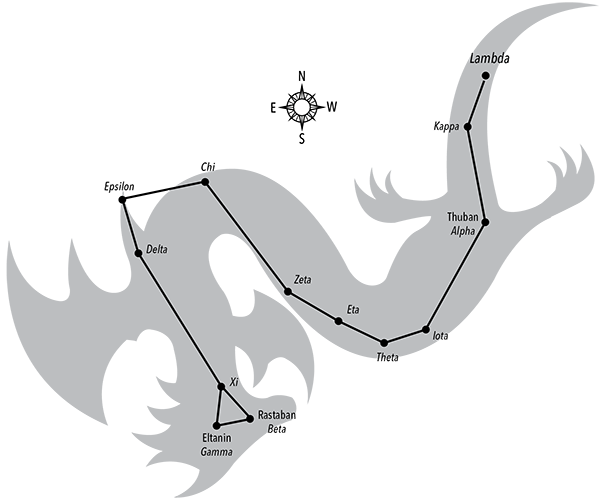
Figure 5.6. Controlling the power of the elements, Draco is the guardian of the earth.
Draco is a circumpolar constellation that does not set below the horizon for most observers in the Northern Hemisphere. Its name means “the dragon” in Latin and it represents Ladon, a dragon in Greek mythology. Ladon watched over the Hesperides (daughters of the god Atlas), who were the guardians of Hera’s apple tree. Hercules was tasked with stealing some of the golden apples, which could only be accomplished after killing Ladon. To honor the slain dragon, Hera placed him among the stars.
In another legend, Draco was one of the Titans who fought many pitched battles against the gods of Olympus. The goddess Athena killed Draco and threw him into the sky. When the Romans told this story, it was Minerva who tossed the dragon into the sky.
The Egyptians regarded Draco as a crocodile, and the Babylonians associated it with Tiamat, the goddess of the primeval ocean, in the form of a sea serpent. The Anglo-Saxons referred to it as the Fire Drake. At one time, Ursa Minor was considered a wing on Draco’s back.
According to Ptolemy, the stars of Draco were equated with Saturn and Mars. Additionally, the constellation is associated with skill, artistic abilities, and ingenuity.
Notable Stars in Draco
Official Designation: Alpha Draconis
Traditional Name: Thuban
Pronunciation: THEW-bahn
This white star is located near the end of the dragon’s tail. Generally considered inconspicuous for an alpha, Thuban was given this designation because it was the pole star approximately 4,500 years ago. The star’s traditional name comes from Arabic and means “the serpent.”
Official Designation: Beta Draconis
Traditional Name: Rastaban
Pronunciation: RAS-tuh-bahn
The traditional name of this star also comes from Arabic and means “the serpent’s head,” which describes its location. Rastaban is a yellow star.
Official Designation: Gamma Draconis
Traditional Name: Eltanin
Pronunciation: EL-tah-nin
This orange star is the brightest in the constellation. During medieval times, Eltanin was known as Al Tinnin, from an Arabic word meaning “snake” or “serpent.” Along with Rastaban it is located on the dragon’s head.
Magical Interpretations and Uses for Draco
In the East, dragons are considered benevolent bringers of prosperity and good luck. In Western culture, the dragon has served as a prevalent emblem for some of the most-fierce warriors such as the Romans and the Vikings. To the Celts, the dragon was a symbol of sovereign power and today it graces the national flag of Wales. Along with serpents, the dragon came to represent Paganism, and images of Saint George slaying the dragon symbolized Christianity’s triumph. However, to many twenty-first-century Pagans and Wiccans the dragon represents wisdom and power.
Along with their ability to fly and breathe fire, dragons were believed to live in the depths of the earth or in deep water. Symbolizing the four elements, they can help draw energy for ritual as well as power for magic circles. Following is an example for calling in the directions to build dragon energy:
“Soaring on the winds with the strength of your wing beats, draw the power of air to this circle, and be my guardian of the east.
With your mighty fiery roar, breathe the power of flame to this circle, and be my guardian of the south.
From the cool depths of lake and sea, bring the flow of water to this circle, and be my guardian of the west.
Within the darkness of your caverns, sovereign of ley lines, draw earth energy to this circle, and be my guardian of the north.”
In many legends, dragons are guardians of great treasure hoards. Curling around the northern celestial region, Draco can be considered a guardian of the pivot point that turns our world. Along with the ability to control water, dragons guard and guide the energy of the land. Just as Hera enlisted the aid of a dragon to guard her tree of golden apples, we too can call on Draco to guard the things we grow and nurture in our gardens. To do this, place stones throughout your garden in the configuration of Draco’s star pattern as you say, “I call on thee, Draco, great dragon of the celestial sphere to connect your energy with the earthly dragons of the ley lines. As it is above, so be it below. Manifest the powers of soil and water in my humble garden. So mote it be.”
For protection of your home, on a starry summer night lay out Draco’s star pattern with pieces of red zircon in a place where they won’t be disturbed for a week. Light a stick of dragon’s blood incense and draw the sign of a pentagram in the air over the gemstones. Walk through your home with the incense and as you enter each room, say: “Draco, Draco, look down from on high; Send dragon power from your place in the sky. Surround and guard this home for me; Draco the dragon, may you my guardian be.”
★ ★ ★
Hercules: The Strongman/Dagda and Odin
Pronunciations: Hercules (HER-kew-leez); Herculis (HER-kew-liss)
Visible Latitudes: 90° North to 50° South
Constellation Abbreviation: Her
Bordering Constellations: Aquila, Boötes, Corona Borealis, Draco, Lyra, Ophiuchus, Serpens
Description: The star pattern has been described as forming the letter H for Hercules; however, it is easier to see the asterism called the Keystone, the square of stars that marks his lower torso. The figure is upside down in the sky.
To Find: Locate the bright star Vega in Lyra and the Keystone of Hercules is to the west. It is southwest of Draco’s head.
Believed to have originated with the Sumerians and associated with Gilgamesh, the early Greeks called this constellation Engonasin, the Kneeling One. Later, Greeks identified this constellation with different heroes such as Prometheus, Ixion, and finally Hercules. The Phoenicians associated it with their god Melkarth.
Hercules was the son of Zeus and a mortal woman. Despite the name Hercules (Heracles in Greek) meaning “the glory of Hera,” the wife of Zeus was enraged about her husband’s dalliances with other women and made life as difficult as she could for Hercules. At one point, she made him go mad and during his insanity he killed his children. When asked for guidance, Apollo told Hercules that he could atone for the murders by serving Eurystheus, the king of Mycenae, for twelve years. As penance, Eurystheus gave him tasks that were considered impossible to accomplish. The constellation of the kneeling man was said to mark the event when Hercules knelt down and prayed to Zeus. Later star maps depicted him standing victorious with a foot on the head of the slain dragon represented by the constellation Draco.
Ptolemy equated this constellation with Mercury, and noted that it provides strength in character and determination in purpose.
Notable Stars in Hercules
Official Designation: Alpha Herculis
Traditional Name: Rasalgethi
Pronunciation: rah-sell-GAYTH-ee
Also spelled Ras Algethi, Rasalgethi is a multiple star system. Alpha-1a is orange with a blue-green companion (Alpha-1b). Alpha-2 is a binary star with one yellow (Alpha-2a) and the other yellow-white (Alpha-2b). The traditional name of this star comes from an Arabic phrase that means “the head of the kneeling one,” which describes the star’s location.
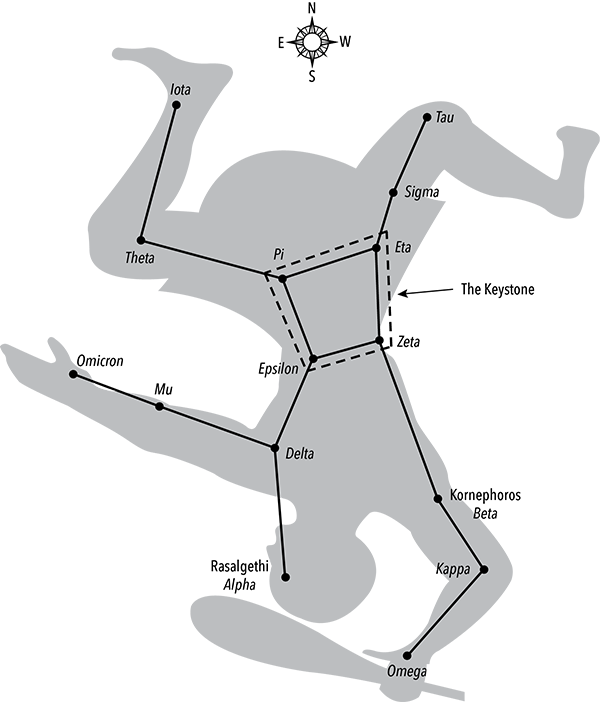
Figure 5.7. Hercules, representing the Dagda and Odin, brings strength and power.
Official Designation: Beta Herculis
Traditional Name: Kornephoros
Pronunciation: kore-neh-FOR-uss
Kornephoros is a yellow star and the brightest in the constellation. Its name comes from Greek and means “the club bearer.” This star is located on Hercules’s shoulder.
Magical Interpretations and Uses for Hercules
The Romans in Britain identified Hercules with the Celtic god the Dagda. The Dagda was a leader of the Tuatha Dé Danann and a principal god of Irish tradition. He was known for being a benevolent god and for possessing many skills. Like Hercules and several other gods, he was known for wielding a mighty club.
To many Pagans and Wiccans, the Dagda is a god of knowledge and wisdom as well as the source of potent creative energy. He can be called on at any time to boost the creative power of magic. With the constellation of Hercules in the night sky, the Dagda can be instrumental in helping us make contact with the fairy realm. On Midsummer’s Eve, leave an offering outside for the fairies so they know you have friendly intentions. On Midsummer Night, walk in a circle to define your magical space and say: “Hercules, Dagda, shining bright; On this starry Midsummer Night. I create a circle as I walk this ground; May the fairy mounds open and magic abound.” Sit in the middle of your circle and reach out with your energy to sense what is going on around you. Don’t expect fireworks, as fairy contact may be very subtle, like the soft breath of a breeze or a slight shift in energy. Whether or not you detect contact, thank the fairies and leave an offering before dissolving your circle.
Well known as a strongman, Hercules can be called on for strength, especially during hard times. Throughout his story this hero of the ancient world was faced with many challenges. When we find ourselves in situations that seem overwhelming, we can turn to this constellation for energy to get us through the rough patches in our lives. Take a small piece of paper, a pencil, and a piece of string or ribbon, and sit outside on a starry night. Draw down the energy of Hercules, and then write a few keywords that describe the challenge or situation confronting you. Turn the paper over and draw the Hercules star pattern. When you are finished, roll up the paper so the star pattern is on the outside and tie it closed with a piece of string or ribbon so it looks like a little scroll. Hold it between your hands and review the challenge or difficulty for which you are seeking help. Follow this with a visualization of how you would like this to be resolved. Don’t let fantasy take over; think in practical terms about how events could actually unfold or a situation be resolved. Leave the scroll outside for the night, or if there isn’t a safe place to leave it, place it on an indoor windowsill. The next night, safely burn the scroll at your altar as you once again visualize the outcome of your challenge.
The epithets Victor “the winner” and Invictus “the undefeated” were used by cults devoted to Hercules. Celebrations were held in Rome on August 12 and 13 to honor him. These are ideal nights to draw on this constellation for strength in dealing with problems or for boosting your spells.
Because Hercules is upside down in the sky, I am reminded of Odin hanging from the world tree Yggdrasil as he sought wisdom. It was during this ordeal that he discerned the runes and brought their mystical meaning into the world. Call on Hercules before rune work or any type of divination to enhance your readings. Lay out the star pattern with runes or with the rune characters written on pieces of paper, and then draw down the energy of the constellation. This can also aid in opening your psyche for inspiration and to receive messages from other realms.
★ ★ ★
Lupus: The Wolf/Spirit Guide
Pronunciations: Lupus (LOO-pus); Lupi (LOO-pee)
Visible Latitudes: 35° North to 90° South
Constellation Abbreviation: Lup
Bordering Constellations: Ara, Centaurus, Libra, Scorpius
Description: The upper part of the star pattern looks like a crooked letter H.
To Find: Locate the Summer Triangle and from the star at its center (Albireo in Cygnus), draw an imaginary line toward the southwest to the red star Antares in Scorpius. Continue that line south and slightly west to the next constellation, Lupus.
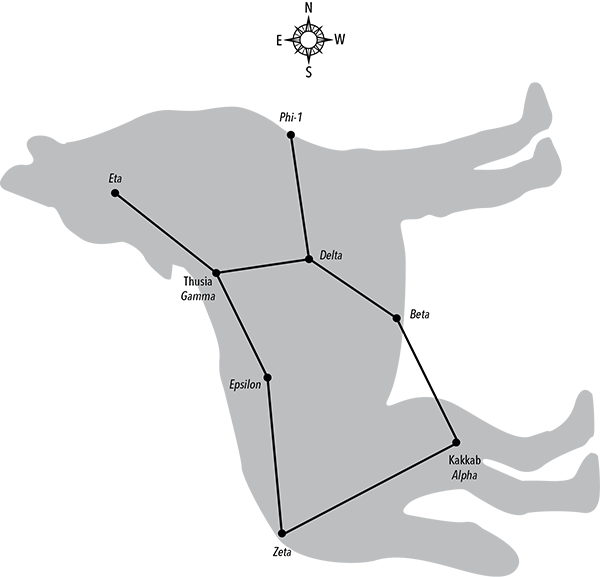
Figure 5.8. Lupus is a guiding spirit and guardian.
Lupus is a constellation of the Southern Hemisphere that can be seen in some parts of the north. Its name means “wolf” in Latin. To the Babylonians, the constellation was known as the Wild Dog, but to the Arabs it was the Lioness. These stars were originally considered part of the Centaurus constellation until Greek astronomer Hipparchus separated them and named the constellation Therion, “wild animal.” Because of its proximity to Centaurus and Ara, the Romans called it Bestia, “the beast,” and interpreted Lupus as a sacrificial offering by the centaur Chiron to the gods.22 The Lupus constellation became identified as a wolf and portrayed as such in Johann Bayer’s 1603 star atlas.
According to Ptolemy, the stars in this constellation are equated with Saturn with a little bit of Mars energy.
Notable Stars in Lupus
Official Designation: Alpha Lupi
Traditional Name: Kakkab
Pronunciation: KACK-kab
This blue-white star marks one of the wolf’s hind legs. The name Kakkab is not often used. It is believed to have come from a Babylonian phrase meaning “the star left of the horned bull,” a reference to the constellation Centaurus, which they regarded as a bison-man.
Official Designation: Gamma Lupi
Traditional Name: Thusia
Pronunciation: thew-SEE-ah
The name of this blue-white star comes from Greek and means “sacrificial animal.” Like the alpha star, the traditional name of this one is seldom used. In modern depictions of Lupus, this star is located on the wolf’s back or neck.
Magical Interpretations and Uses for Lupus
The wolf is sacred to and associated with a number of gods and goddesses. Because of many misconceptions, this animal is associated with negative traits by some people. However, to others the wolf is a symbol of community, loyalty, protection, and spirit. It represents freedom and the power of the wilderness as well as discipline and the power of the group. It is a spirit animal and a powerful ally for psychic and shamanic work. If a wolf presents itself during astral travel, it will be your guide and guardian.
The Lupus constellation can help you call on the power of the wolf. The wolf is guided by instinct and can help you learn to trust your intuition. On a starry night, lay out the star pattern of Lupus on your altar with star glitter/confetti or tea light candles. Also, light at least one altar candle. Prepare yourself for energy work and then stand in front of your altar. Hold your arms out to the sides at shoulder height, palms facing upward as though you are going to hug the world, and howl like a wolf. It doesn’t have to be loud, just allow yourself to feel the wildness and freedom of howling. Slowly bring your hands up overhead, and then bring your palms together. Lower your hands, keeping them together until they are in prayer position in front of your heart as you say: “Lupus, Lupus, wolf of the sky; Be my guide as darkness draws nigh. Protect and lead me, while wisdom you share; My honor and loyalty to you, I swear.”
Sit in front of your altar, gaze at the candle flame for a minute or two, and then close your eyes. Bring the image of a wolf’s face into your mind and imagine that you are looking into its eyes. Its deep gaze pulls you inward. Follow wherever the wolf leads because this powerful spirit can show you your place and function in the world. Through the wolf you will see your own power and learn to sense and trust your insights. Most of all, the wolf will help you come to know who you are and that you do not need to prove it to other people. Spend as much time as you need with the wolf and then let it go. You can always meet again. Leave the Lupus star pattern on your altar for a day or two to remind you of your encounter with this spirit animal.
Wolfsbane is a plant that is well known, but mainly from stories and films about werewolves. During medieval times it was associated with sorcery. Wolfsbane is the common name for Aconitum lycoctonum and it is sometimes applied to Aconitum napellus, which is more commonly known as monkshood. Blooming in mid to late summer, wolfsbane has soft yellow flowers on tall, upright spikes. The plant should be handled with care as it is poisonous and it should never be ingested. Wolfsbane grows in open woodlands and moist hillsides. If you find it growing wild, pick a few sprigs to take home to aid in drawing down the energy of Lupus. Even better, if you find it in a garden center, plant it in your yard where it can help draw the power of Lupus and represent the wild spirit of the wolf.
★ ★ ★
Lyra: The Harp/Otherworldly Guide
Pronunciations: Lyra (LIE-rah); Lyrae (LIE-rye)
Visible Latitudes: 90° North to 40° South
Constellation Abbreviation: Lyr
Bordering Constellations: Cygnus, Draco, Hercules
Description: A small parallelogram of four faint stars. Vega is northwest just outside of this shape depicting part of the instrument’s handle.
To Find: Vega is the brightest star in the summer sky and is the western anchor point for the Summer Triangle asterism.
This constellation represents the lyre of Orpheus, the musician and poet of Greek mythology. A lyre is a type of small harp. According to some myths, Hermes invented it from a tortoise shell, which Apollo then gave to Orpheus. Orpheus was so talented that he enchanted the birds and tamed wild animals with his music. When his wife Eurydice was killed, he descended to the underworld to retrieve her. There, he charmed Pluto with his music and was allowed to leave with Eurydice, but only under the condition that they could not look back. As such stories go, temptation was too great and one glance back sealed their fates.
Another legend tells how the Thracian Maenads, female followers of Dionysus in northeastern Greece, murdered Orpheus because he had failed to honor the god of wine. According to one version of this story, his lyre was thrown into a river and Zeus, who sent an eagle to retrieve it, placed the instrument and the bird among the stars. Another version says that the Muses carried the lyre to heaven.
Lyra is sometimes associated with the Greek poet and musician Arion, whose melodies attracted a dolphin that ultimately saved his life. Delphinus represents the dolphin and this story is told in the entry for that constellation in chapter 6.
On old star maps, Lyra was often depicted as an eagle carrying the harp; however, it was sometimes depicted as just the bird itself. To the Arabs, Lyra was the Swooping or Falling Eagle; the Aquila constellation was their Flying Eagle. In India, Lyra was associated with the vulture instead of the eagle and was called the Falling Vulture. In the British Isles, the Anglo-Saxons and Celts considered Lyra as a harp and knew it as the Hero’s Harp and King Arthur’s Harp.
Ptolemy equated the stars of this constellation with Venus and Mercury. Through the ages Lyra has been associated with magic and spellwork.
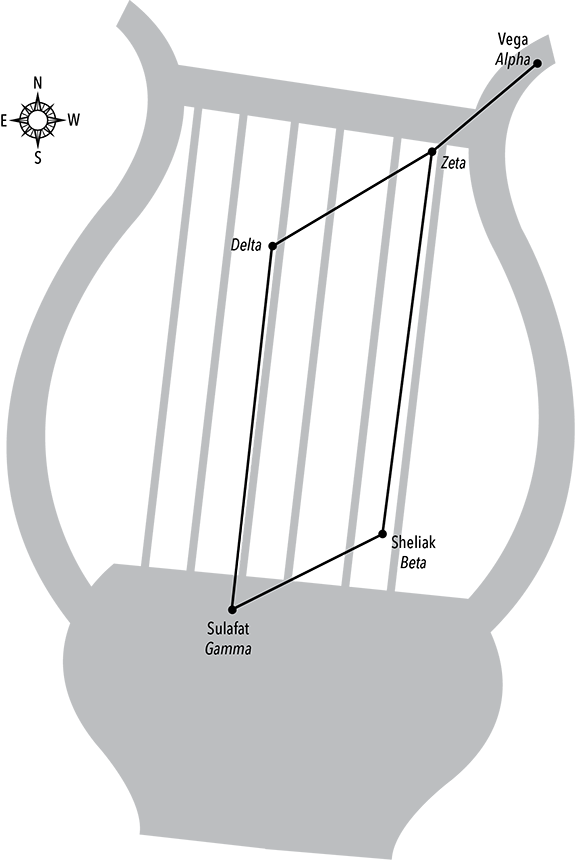
Figure 5.9. Lyra brings us sweet music from the heavens.
Notable Stars in Lyra
Official Designation: Alpha Lyrae
Traditional Name: Vega
Pronunciation:VAY-gah
Often spelled Wega, Vega is the fifth brightest star in the entire sky and the second brightest in the Northern Hemisphere. In depictions of Lyra, this blue-white star is located on the handle of the harp and was the northern pole star in approximately 12,000 BCE. To ancient Egyptians, this was the Vulture Star associated with the goddess Ma’at, who was often depicted holding a vulture feather. The name Vega is derived from the Arabic word “falling” or “swooping” in the name of the constellation. Vega also has the distinction of being the first star photographed in 1850. It is associated with artistic talents, social awareness, and magic. Vega was one of Agrippa’s fifteen important fixed stars.
Official Designation: Beta Lyrae
Traditional Name: Sheliak
Pronunciation: SHELL-ee-ack
Sheliak is a blue-white spectroscopic binary star. Its traditional name is derived from Persian and means “the harp.” It is usually depicted on the strings of the lyre.
Official Designation: Gamma Lyrae
Traditional Name: Sulafat
Pronunciation: SUEL-ah-faht
Sulafat is also blue-white and is actually the second-brightest star in the constellation. Its traditional name is derived from Arabic and means “the tortoise.” This harkens back to the Greek story of Hermes inventing the harp from a tortoise shell. Like the beta star, Sulafat is usually depicted on the strings of the lyre.
Magical Interpretations and Uses for Lyra
Lyres and harps have served as ceremonial instruments since ancient times. Among the Norse, the harp represented a mystic ladder that connected heaven and earth. Harps were also said to become guides to the otherworld for their deceased owners, which is why they were usually placed on funeral pyres. Standard equipment for Celtic bards, harps could bring laughter, tears, or sleep. The Dagda’s harp was said to hold his melodies until bidden to release them. In addition, the music of the Dagda’s harp was said to initiate the change of seasons. To the Celts, harp music was associated with the otherworld and enchantment. This instrument also represents the immortality of the soul.
Summer is a special time because we can be outdoors in lightweight clothing that allows us to feel closer to the natural world. We can also spend more time outside at night and feel the enchantment of the dark. Use an iPod or other device with headphones or earbuds and sit outside on a starry night while you listen to harp music. Draw down the energy of Lyra, and then sit comfortably while you listen to one song several times until you can hold the melody in your mind. Turn off the device and remove the headphones or earbuds, but keep the harp music in your mind as you tune in to the energy of the natural world around you. The melody may begin to shift and change, but don’t try to go back to the original tune. Instead, follow the altered song in your mind. Allow Lyra to guide you and you may encounter sweet music from the fairy realm.
Music touches us in a unique way, often more deeply than words. It can reach into our souls and help us move below the mundane façade of everyday life to find what is meaningful. Use the glitter/confetti or bluish gemstones (the stars of Lyra are blue-white) to lay out the pattern of stars on your altar. Gemstones such as blue lace agate or celestite/celestine are particularly good to use as they have an ethereal quality. Follow the previous exercise, but instead of removing the headphones or earbuds and opening to the world around you, keep listening to the music as you focus on yourself. Let the harp guide you inward to touch the essence of your soul. Let it also guide you to the appropriate time to end the session, and then sit in silence. Before moving on to other things, give yourself a big hug.
Music is also a form of celebration, and summer is a time to kick back and enjoy life. Lay out the pattern of Lyra’s stars indoors or outside to serve as a reminder to slow down and listen to the music of life.
★ ★ ★
Ophiuchus and Serpens: The Serpent Bearer and the Serpent/Harmonious Energy
Pronunciations: Ophiuchus (ohf-ee-YOU-kuss); Ophiuchi (ohf-ee-YOU-kee)
Visible Latitudes: 60° North to 76° South
Constellation Abbreviation: Oph
Bordering Constellations: Aquila, Hercules, Libra, Sagittarius, Scorpius, Serpens
Pronunciations: Serpens (SIR-pens); Serpentis (sir-PEN-tiss)
Visible Latitudes: 74° North to 64° South
Constellation Abbreviation: Ser
Bordering Constellations: Aquila, Boötes, Corona Borealis, Hercules, Libra, Ophiuchus, Sagittarius, Virgo
Description: The somewhat dim stars of Ophiuchus form the shape of a large crystal pointing north and slightly east. Northwest of Ophiuchus is a triangle of stars that represents the head of Serpens. A line of stars to the east of Ophiuchus marks the serpent’s tail.
To Find: Locate the bright star Vega, the western anchor point for the Summer Triangle. Draw an imaginary line southwest to Rasalhague, the star that marks the point of Ophiuchus’s crystal shape. It is just south of Hercules.
Ophiuchus and Serpens are presented together in this book because they are an intertwined set of three constellations. Ophiuchus is in between the two parts of Serpens, which is the only constellation formed by two separate ones. Their individual names are Serpens Caput, meaning “the head of the snake,” and Serpens Cauda, “the serpent’s tail.” Ophiuchus was formerly known by the name Serpentaurius. Its present name is derived from two Greek words that mean “serpent” and “to handle.” In some ancient depictions, Ophiuchus is shown preventing Serpens from grabbing Corona Borealis, the Northern Crown.
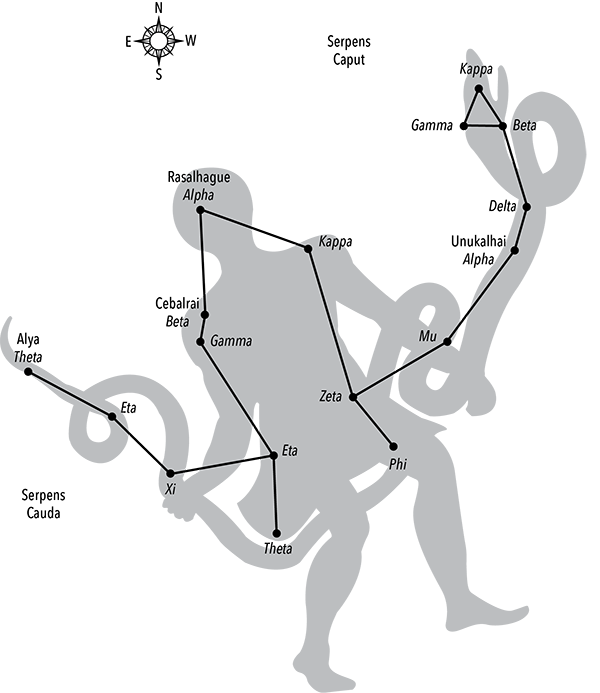
Figure 5.10. Ophiuchus and Serpens represent the eternal dance of life-force energy.
Originally, the Ophiuchus constellation represented Phorbas, the man hired by the people of Rhodes to rid their island of snakes. In later Greek myth, Ophiuchus represented the god of medicine, Asclepius, the son of Apollo. Legends vary as to whether Asclepius brought people back from the dead or that he was such a great healer few of his patients died. Either way, it caused a great deal of concern for Hades, god of the underworld, who was running short on customers. To solve his problem, Hades asked his brother Zeus to kill Asclepius. Zeus obliged and struck the god of medicine dead, but then put him in the sky as a lasting tribute to the healer’s talents.
Before Greek influence, the Arabs considered this area of the sky as a pasture and Ophiuchus as a shepherd. As mentioned in Chapter One, Ophiuchus is the thirteenth constellation that falls within the ecliptic. Astronomically, Ophiuchus is noted for the number of new stars that seem to be born in its area of the sky.
According to Ptolemy, the Ophiuchus constellation is mostly equated with Saturn and a little with Venus. He considered Serpens to be equated with Saturn and Mars. In medieval medicine, Serpens was believed to aid in curing venomous snakebites.
Notable Stars in Ophiuchus
Official Designation: Alpha Ophiuchi
Traditional Name: Rasalhague
Pronunciation: rah-sell-HOG
Also spelled Ras Alhague, this double star marks the head of Ophiuchus. Its traditional name comes from Arabic and means “the head of the serpent charmer,” a name that dates to post-Greek influence. Alpha-1 is a white star; Alpha-2 is orange.
Official Designation: Beta Ophiuchi
Traditional Name: Cebalrai
Pronunciation: SEB-all-rye
Cebalrai is an orange star that marks one of Ophiuchus’s shoulders. Its name comes from Arabic and means “the shepherd’s dog.” This name dates to pre-Greek influence on Arab astronomy.
Notable Stars in Serpens
Official Designation: Alpha Serpentis
Traditional Name: Unukalhai
Pronunciation: uh-NOO-kool-eye
Unukalhai is an orange star located almost halfway between the head of the snake and Ophiuchus’s body. Its name is from Arabic and means “the serpent’s neck.” In medieval Latin, this star was called Cor Serpentis, “the Serpent’s Heart.”
Official Designation: Theta Serpentis
Traditional Name: Alya
Pronunciation: al-you
Alya is a white binary star located near the end of Serpens’s tail. Its Arabic name translates as “the sheep’s tail.” Like Cebalrai in Ophiuchus, the name dates to a time when the Arabs considered this part of the sky as a pasture and Ophiuchus as a shepherd.
Magical Interpretations and Uses for Ophiuchus and Serpens
These constellations can be instrumental in activating Kundalini energy. Running up our spines, this energy is portrayed as coiling snakes and appears much like the caduceus, the staff of Asclepius and the symbol of modern medicine. This relates to Ophiuchus portraying Asclepius, the god of healing, and Serpens, a snake. Before being cast as evil incarnate, snakes were regarded as agents of healing.
Kundalini energy is described as a sleeping serpent coiled around the first chakra at the base of the spine. When this energy is activated, it rises through two energy channels that weave back and forth across a central path along the spine. The goal of working with Kundalini is to move the full force of this energy upward, opening and activating all the chakras. Working with these channels along with the energy of these constellations can help us generate powerful personal energy for ritual and magic as well as healing.
Because the natural world helps us feel alive and balanced, doing this exercise outdoors is especially beneficial. Find a place where you can sit comfortably. Begin with your left hand over your solar plexus chakra and your right hand over your heart. Close your eyes and focus on the energy of these chakras until you feel them activate. Bring your attention down to your feet and the earth star chakra, and then draw earth energy up into your body. Since Kundalini energy is especially powerful, it is important to keep grounded.
Move your attention to the base of your spine. Imagine the energy rising on both sides of your spine. As it reaches each chakra, the energy flow crosses over to the other side of the body, weaving back and forth like the snakes of the caduceus. When your energy reaches the top of your head, visualize it rising higher through the three celestial chakras, meeting the descending energy of Ophiuchus and Serpens. Visualize this energy moving out across the area where you are sitting, spreading farther and farther, bringing healing and vitality to everyone and everything it encounters. Now visualize a little of that energy descending down through your chakras, bringing you balance, strength, and peace. Take time to feel your power, and then let your visualization gradually fade as you bring your awareness to your contact with Mother Earth. When you feel grounded, open your eyes and enjoy the beauty of the world around you and the sky above.
★ ★ ★
Sagittarius: The Archer/Wildness of Nature
Pronunciations: Sagittarius (sa-jih-TAIR-ee-us); Sagittarii (sa-jih-TAR-ee)
Visible Latitudes: 55° North to 90° South
Constellation Abbreviation: Sgr
Bordering Constellations: Aquila, Capricornus, Corona Australis, Ophiuchus, Scorpius, Serpens
Description: Although this constellation is often described as a teapot, the square in the upper part of Sagittarius’s body is slightly easier to discern. This square is part of an asterism called the Milk Dipper. Also, a triangle of stars to the west represents the archer’s bow.
To Find: Beginning at the Summer Triangle asterism, draw an imaginary line from Altair in Aquila at the southern anchor point of the triangle toward the tail of Scorpius. Sagittarius is two-thirds of the distance along that line. It does not rise far above the horizon and is not always visible in the Northern Hemisphere.
Sagittarius is a constellation of the Southern Hemisphere. Rooted in Sumerian myth, this constellation was adopted by the Babylonians, who depicted it on monuments. According to cuneiform inscriptions, it was called the Strong One. The Persians, Turks, and Syrians discerned either a bow or a bow and arrow in the star pattern. This constellation was also recognized in Egypt, and in India its name meant “the arrow.”
Greek astronomer and mathematician Eratosthenes associated the constellation with Crotus, the son of Pan. Raised with the Muses, daughters of Zeus, Crotus was an accomplished musician and hunter as well as the inventor of archery. When he died, the Muses asked their father to honor him with a place among the stars. In classic Greek mythology, this constellation came to represent an archer who is usually depicted as a centaur holding a bow and arrow. A centaur is a creature with the upper body of a man on top of the body and four legs of a horse. This constellation is often wrongly identified as the centaur Chiron, who is represented by the constellation Centaurus. Sagittarius is usually portrayed aiming his arrow toward the heart of Scorpius, which is represented by the star Antares.
Ptolemy equated most of the stars in Sagittarius with Jupiter, along with Mars, Mercury, and Saturn, depending on their location in the constellation. He associated the arrow point with Mars and the moon. In modern astrology, Sagittarius is equated with Jupiter. According to Culpeper, Sagittarius influences the hips, thighs, sacrum, blood vessels, and pituitary gland.
Notable Stars in Sagittarius
Official Designation: Alpha Sagittarii
Traditional Name: Rukbat
Pronunciation: ROOK-baht
Rukbat is a blue star and although it is the alpha, it is not the brightest in the constellation. Its name comes from Arabic and means “the knee,” which describes its location on the figure of Sagittarius. A variation in translation of the spelling of this name can be found in the delta star of Cassiopeia, Ruchbah. Rukbat is associated with steadiness.
Official Designation: Beta Sagittarii
Traditional Name: Arkab
Pronunciation: ARE-koob
Arkab is composed of multiple stars. Arkab Prior (Beta-1) is a double blue star. It is named Prior because it seems to lead Arkab Posterior (Beta-2) across the sky. Arkab Posterior is a yellow-white star. The name Arkab comes from Arabic and means “hamstring” or “tendon.”
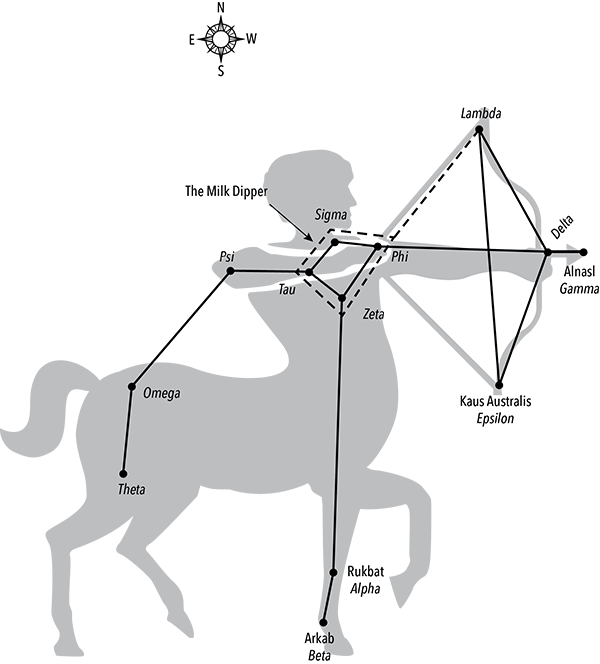
Figure 5.11. Sagittarius helps you take aim at your goals.
Official Designation: Epsilon Sagittarii
Traditional Name: Kaus Australis
Pronunciation: KOWS ow-STRAH-liss
Kaus Australis is a binary star, one blue (Epsilon-1) and one orange (Epsilon-2), and it is the brightest in the constellation. The name Kaus Australis is a mix of languages with the Arabic word for “bow” and the Latin word for “southern,” respectively. This star is located at the base of the archer’s bow and is associated with mental stimulation.
Official Designation: Gamma Sagittarii
Traditional Name: Alnasl
Pronunciation: al-NAH-zul
Alnasl is an orange star and its name means “arrow point” or “arrowhead.” When we see this star we are looking toward the center of the Milky Way galaxy.
Magical Interpretations and Uses for Sagittarius
Like satyrs, centaurs symbolize male virility, stallion energy, and sexuality in general. They epitomize sensuality and aid in developing comfortable awareness of the physical body. With this in mind, sultry summer days are an ideal time for the following visualization. Find a place outside where you can sit without being disturbed. Imagine that you are standing in a meadow bordered by a forest. Looking down to the ground in front of you, you see two of your four hoofed feet. You are a centaur. As you become aware of the warm sun on your broad back, you swish your long, flowing tail, creating a slight breeze. Gazing across the meadow, you can see shimmering waves of heat rising skyward. Beyond and off to your right is a forest. The cool of the trees is inviting and you begin to move toward them; first at a slow pace, and then an easy trot. The movement feels invigorating, so you pick up speed to a full gallop. Air rushes past your face, and as you breathe harder you become aware of the fragrant plants in the meadow. And now, let your imagination take over to lead you into the forest or to turn around and enjoy the sun and the meadow.
Centaurs personify the general wildness of nature, but let’s not forget the green world. Tidy gardens and manicured lawns show the influence of human hands, but beyond suburbia we find the wild glory of Gaia. Late July and early August are especially good times to observe the profusion of plants that echo the vitality of life itself. Take some berries along on a walk through a meadow or forest. If you know a place where berries grow wild, pick some along the way. When you find a place that seems appropriate for an offering, set out some of the berries in the Sagittarius star pattern as you say: “In the name of Sagittarius, I leave this offering. May the beauty of his stars shine forever, and may my spirit know his wild freedom.”
Before guns and the advent of modern warfare, the most feared legions were the bowmen who could strike quietly from a distance. To be a bowman took a great deal of power and skill. With this in mind, an archer is the perfect symbol when you are planning changes in your life. Sagittarius reminds us to aim high and put our talents out for all to see. On a starry night lay out the pattern of the whole constellation or just the bow on your altar or any place where you will see it often. If possible, use blue gemstones such as azurite or lapis lazuli and one orange gemstone such as amber or sunstone for the star Alnasl at the point of the arrow.
Place something that symbolizes your goal opposite the arrow stone, and then pick up the orange arrow stone. Hold it between your hands and say: “Let loose your arrow in the dark; Know my goal and find your mark.” Return the stone to the star pattern, and then hold the palms of both hands about an inch or two above the gemstones. Visualize the energy of Sagittarius coming through your celestial chakras, into your body, through your hands, and into the stones. Now, see that energy accumulate in the stone, representing the point of the arrow. Watch as the energy moves from the arrow toward the symbol of your goal and surrounds it. As this occurs, see yourself reaching that goal. Hold the image and feelings for a moment or two and then let them fade. Leave the stones and symbol of your goal in place for a day or two, or for as long as it feels appropriate.
★ ★ ★
Scorpius: The Scorpion/Death Wielder and Protector
Pronunciations: Scorpius (SKOR-pee-us); Scorpii (SKOR-pee-eye)
Visible Latitudes: 40° North to 90° South
Constellation Abbreviation: Sco
Bordering Constellations: Ara, Corona Australis, Libra, Lupus, Ophiuchus, Sagittarius
Description: This constellation actually resembles the creature it represents. A line of stars form the curving body of the scorpion, which ends in the curl of its poisonous tail.
To Find: Locate the Summer Triangle asterism and from the star at its center (Albireo in Cygnus), draw an imaginary line toward the southwest to the red star Antares, which marks the heart of Scorpius. The line of stars that trail to the southeast delineate the scorpion’s tail. For those in the north, this constellation is low in the sky and for many of us it is not visible.
Located in the Southern Hemisphere, Scorpius is one of the oldest constellations. Five thousand years ago, the Sumerians considered it a scorpion. From approximately 5000 to 1000 BCE, it marked the autumn equinox and as such was considered a gateway to the otherworld as the dark time of year began. Bolstered by the scorpion’s poisonous sting, the constellation remained associated with death and darkness.
In Greek mythology, this constellation was identified with the scorpion that killed Orion, the hunter. Opposite each other in the sky, the myth is played out with the Orion constellation setting as Scorpius rises. In one version of the story, Gaia sent the scorpion after Orion because of his boast that he could kill any wild beast.
During the period of ancient Greece, this constellation was considerably larger with two distinctive parts. The one we know today as Scorpius contains the body, tail, and stinger. What we know as Libra was the second part of Scorpius called Chelae Scorpionis, “the claws of the Scorpion.” The Romans separated these constellations because they thought Libra looked more like weighing scales than scorpion claws.
Ptolemy equated this constellation mainly with Mars and Saturn, but also Jupiter or Mercury, depending on their location in the figure. In modern astrology, this constellation is equated with Mars and Pluto. According to Culpeper, this constellation influences the bladder, genitals, pubic bone, and nose.
Notable Stars in Scorpius
Official Designation: Alpha Scorpii
Traditional Name: Antares
Pronunciation: an-TAIR-eez
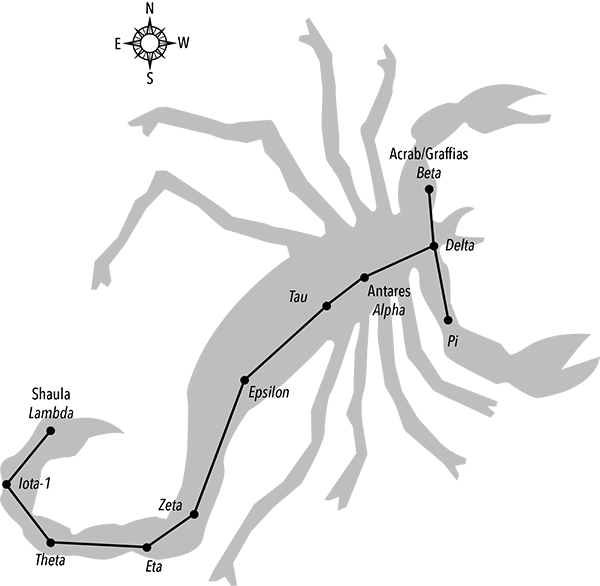
Figure 5.12. Scorpius is a fearsome protector.
This bright red star marks the heart of the scorpion. The name Antares comes from ancient Greek and has been translated as “anti-Ares” as well as “the rival of Mars.” The latter is believed to refer to the star having a color similar to the planet Mars. The Babylonians called this star the Breast of the Scorpion, and its name in Latin, Cor Scorpii, means “scorpion’s heart.” In ancient Egypt, Antares represented the scorpion goddess Selket and was sacred to Isis. In Persia, Antares was one of the four royal stars and called the Guardian of the West. Additionally, it was one of Agrippa’s fifteen important fixed stars.
Official Designation: Beta Scorpii
Traditional Names: Acrab; Graffias
Pronunciations: uh-KRAB; GRAFF-ee-us
Although only the sixth brightest in the constellation, its prominent position gave this blue-white binary star its beta designation. The name Acrab, which is also spelled Akrab, comes from Arabic and means “the scorpion.” Its other name, Graffias, is derived from a Greek word meaning “crab.” In depictions of the scorpion it is located at the base of one of the claws.
Official Designation: Lambda Scorpii
Traditional Name: Shaula
Pronunciation: SHOW-lah
Despite its designation deep into the letters of the Greek alphabet, Shaula is actually the second-brightest star in the constellation. Its traditional name comes from Arabic and means “the scorpion’s stinger,” which describes its location on the tail. Shaula is a blue-white triple star system.
Magical Interpretations and Uses for Scorpius
The scorpion is a small but potent creature that has had evil or negative connotations in many cultures, but not all. To the Egyptians and Babylonians, it was a symbol of protection. The goddess Selket, protector of the dead, was depicted with a scorpion on her head, and Isis escaped from the murderous Seth under the protection of seven scorpions. In addition, the Babylonians believed that scorpion-people guarded the seven gates of the underworld. If you are feeling in need of protection, carry or wear a Scorpio pendant to attract good luck and repel negativity. To prepare it as an amulet, dab it with peppermint or rosemary oil, and draw down the energy of this constellation as you say: “Scorpius, Scorpius, bring luck to me. Protect and remove negativity.” Alternatively, instead of using oil on the pendant you could pass it through the smoke of frankincense.
Scorpius is a backdrop to the sun in late November during the dark of the year. Its lesson during the long days of summer is to embrace your dark side. Darkness is the place of incubation for creativity, spirituality, transformation, and psychic skills. When engaging in activities to explore deeper aspects of the self and/or develop psychic abilities, let Scorpius give your efforts a boost. Before you begin your activity, lay out the constellation’s pattern of stars using bloodstone, labradorite, and/or moonstone as you say: “Scorpius, Scorpius, whom many fear; In dark of night I call you near. Help me draw forth my talent and skill; So mote it be, this is my will.”